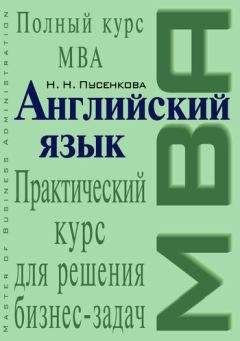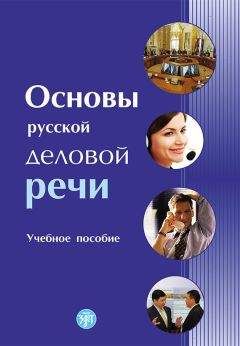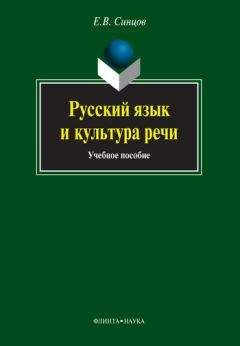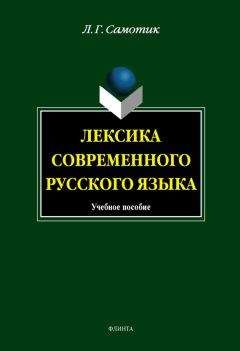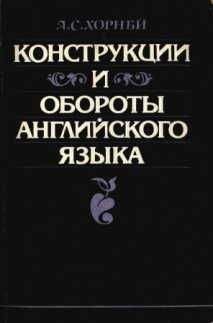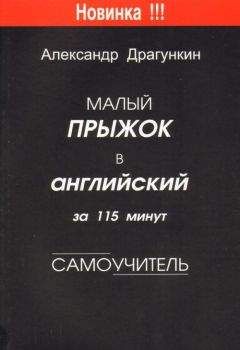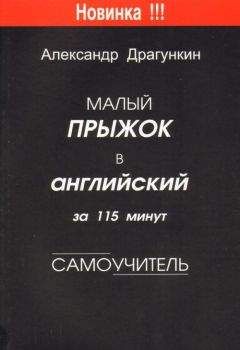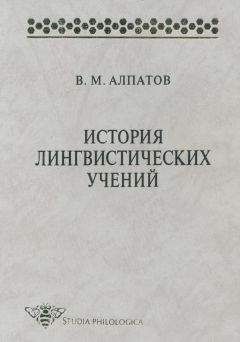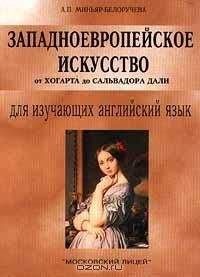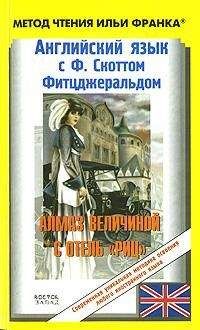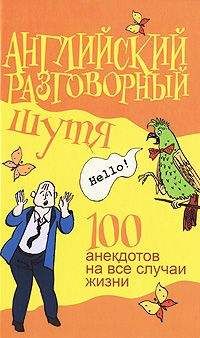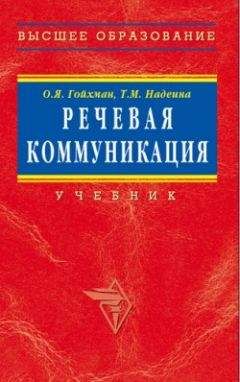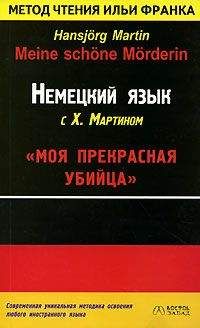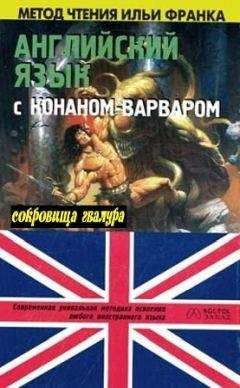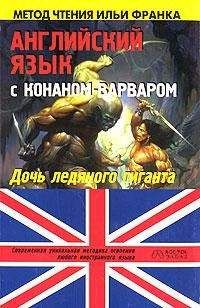А. Миньяр-Белоручева - Западноевропейское искусство от Джотто до Рембрандта
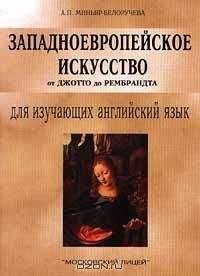
Скачивание начинается... Если скачивание не началось автоматически, пожалуйста нажмите на эту ссылку.
Жалоба
Напишите нам, и мы в срочном порядке примем меры.
Описание книги "Западноевропейское искусство от Джотто до Рембрандта"
Описание и краткое содержание "Западноевропейское искусство от Джотто до Рембрандта" читать бесплатно онлайн.
Тексты настоящего пособия охватывают пять веков западноевропейской живописи от Джотто до Рембрандта. Это дает возможность обучаемым приобрести не только лингвистические знания, усвоив обширный лексический материал, но и культурологические, поскольку последовательный хронологический переход текстов от одного художника к другому позволяет создать более или менее целостную картину развития западноевропейской искусства с XIII по XVII вв. Система упражнений направлена на усвоение лексического материала и развитие навыков устной речи.
Данная книга является первой частью цикла учебных пособий для изучающих английский язык и предназначена для студентов-искусствоведов, учащихся классических гимназий, лицеистов и всех интересующихся искусством.
Учебный центр «Московский Лицей»
пособие для изучающих английский язык
издание второе переработанное и дополненное
Москва -1999
Рецензенты:
И. И. Малинина кандидат филологических наук
Н. В. Васютина кандидат филологических наук
РЕКОМЕНДОВАНО кафедрой иностранных языков исторического факультета МГУ им. М. В. Ломоносова
4. The persons grieve in the manner possible to their individual personalities.
a. Lamentation
b. Raising of Lazarus
c. Joachim among the Shepherds
d. Madonna and Child Enthroned
V. Translate the text into English.
Конец XIII – начало Xiv вв. в европейской живописи знаменуется переходом от условных традиций средневековья к реалистическим традициям эпохи Возрождения и связан с именем Джотто, который впервые ввел свет и внутреннее пространство. Композиции Джотто просты. В Капелле дель Арена в Падуе цикл фресок из 38 сцен на тему «Искупление Грехов», главными героями которых являются Христос и Мария, Джотто расположил в три ряда. Сюжеты из Евангелия художник представил как реальные события. Вместо условного золотого фона византийских мозаик Джотто ввел пейзажный фон. Он добился трехмерного пространства определенным расположением (arrangement) фигур на плоскости стены. В отличие от византийских фигур, висящих в пространстве, герои Джотто твердо стоят на ногах.
VI. Summarize the text.
VII. Topics for discussion.
1. Giotto's style and characters.
2. Giotto as the father of modern painting.
Unit II Masaccio (1401-1427/29)
The break between what had gone before and the new 15th century creative art of Florence is seen immediately in the Enthroned Madonna and Child by the short-lived Tommaso di Ser Giovanni known to his contemporaries as Masaccio who was, after Giotto, the next great founder-figure not only of Italian but of Western painting. This picture is a central panel of an altar-piece painted by Masaccio when he was twenty-five. Its revolutionary heroic realism can be paralleled only in the work of his friend, the sculptor Donatello, older than Masaccio but working in Florence at the same time. In spite of the Gothic pointed arches used for the panels and the golden background this is a Renaissance picture. Masaccio's Madonna and Child are a simple, sculpted group, as if blocked out from the same piece of stone, absorbed, archaic and unsmiling images. The throne on which they sit and on which the large monumental Madonna casts a shadow is solid and three-dimensional. The Child is realistically human and seriously divine. He takes grapes from his Mother as a solemn foretaste of the Passion.
Masaccio's innovations are visible in the frescoes he painted about 1425 in the Chapel of the Brancacci family in Florence. In his mid-twenties he revolutionised the art of painting. In the principle scene in the series the Tribute Money Masaccio created a new sense of actual masses existing in actual space. The subject recounts how when Christ and the Apostles arrived at Capernaum, the Roman tax-gatherer came to collect tribute. Christ told Peter he would find the tribute money in the mouth of a fish in the nearby Sea of Galilee. Peter cast for the fish, found the coin, and paid the tax-gatherer. The artist has arranged the Apostle figures in a semicircle around Christ, with the discovery of the money placed in the middle distance at the left and the payoff at the right. The Apostles are enveloped in cloaks. This gives them the grandeur of sculpture and a sense of existence in space. The Apostles' faces are painted with quick, soft strokes of the brush. Masaccio has performed a miracle almost without the use of line. Form is achieved by the impact of light on an object. In this picture Masaccio proved a simple maxim that 'Nothing is seen without light'. Unlike Giotto who had attempted to take the observer only a few yards back into the picture, where he immediately encountered the flat, blue wall, Masaccio leads the eye into the distance, over the shore of Galilee, past half-dead trees to the range of far-off mountains, and eventually to the sky with its floating clouds. And while Giotto'sought for the best means of telling the story selected as the subject, Masaccio sought a fitting incident which as a theme, would enable him to depict the characters he chose to represent.
On the narrow entrance wall to the chapel Masaccio painted his vision of the ExpulsionfromEden. In this fresco the clothed angel floats above, sword in one hand, the other hand points into a desolate and treeless world. Adam's powerful body is shaking with sobs; he covers his face with his hands in a paroxysm of guilt and grief. Eve covers her nakedness with her hands, but lifts up her face in a scream of pain. Masaccio's drawing of the human figures and faces is masterly. Never before the nude figures had been painted with such breadth and ease; and the man's separation from God had never before been represented with such tragic intensity.
Masaccio made a great advance in both linear and aerial perspective; his figures were placed firmly on different planes in the same composition. Masaccio's style was characterised by his contemporaries as «pure, without ornament». By the fifteenth century the Brancacci Chapel had become the place where young artists including Michelangelo, went to learn from Masaccio – the basic principles of form, space, light, and shade of the Renaissance painting.
Make sure you know how to pronounce the following words:
Masaccio; Renaissance; Donatello; Florence; Apostles; Galilee; Capernaum; Milan; Eden; archaic; paroxysm
NotesTribute Money – «Чудо со статиром»(«Подать»)
Expvlsionfrom Eden – «Изгнание из Рая»
Enthroned Madonna and Child – «Мадонна с Младенцем на Престоле»
the Passion – Страсти Господни
TasksI. Read the text. Mark the following statements true or false.
1. Masaccio was the first founder-figure of Italian painting.
2. 'Nothing is seen without light' was Giotto's maxim.
3. Masaccio created a new sense of supernatural reality.
4. Late life Masaccio revolutionised the art of painting.
5. In a paroxysm of guilt and grief Eve covers her face.
6. The Arena Chapel became the place where young artists studied the basic principles of the Renaissance painting.
II. How well have you read? Can you answer the following questions?
1. What did Masaccio paint at the age of twenty-five?
2. How did Masaccio develop Giotto's innovations? What miracle did Masaccio perform?
3. Is the Enthroned Madonna and Child a Gothic or Renaissance picture? Why?
4. What does the subject of the Tribute Money recount? How did Masaccio group the figures?
5. What differs the Masaccio from the Giotto? How far did Masaccio take the observer into his painting the Tribute Money?
6. What is represented in the Expulsion from Eden? How did Masaccio picture man's separation from God?
III. I. Give Russian equivalents of the following phrases:
Gothic pointed arches; light and shade; a central panel of an altarpiece; the grandeur of sculpture; the Passion; to take the observer a few yards back in the picture; in the principle scene; a sense of actual masses existing in actual space; the subject recounts; sculpted group; a tax-gatherer; to cast for the fish; to perform a miracle; on the entrance wall to the chapel; the impact of light on an object; to float above: payoff; to render the event; a simple maxim; in a paroxysm of guilt and grief; to cover the face with the hands; to lift up the face; to paint with breadth and ease.
II. Give English equivalents of the following phrases:
изобразительное искусство; центральная часть алтарного образа; влияние света на предмет; величие скульптуры; над входом в капеллу; сюжет повествует; сотворить чудо; скульптурная группа; готические стрельчатые арки; ощущение естественности среды, в которой пребывают герои; парить над; сотрясаться от рыданий; принципы пространства и светотени; оплата; передать событие; бросить невод; писать размашисто и легко; закрыть лицо руками; мытарь; в приступе вины и горя; простая истина; провести зрителя на несколько метров вглубь картины.
III. Make up sentences of your own with the given phrases.
IV. Translate the following groups of words into Russian:
create – creator – creative – creativity – creature; found – founder – foundation; sculpture – sculptor – sculptural – sculptured; revolution – revolutionary – revolutionise – revolutionist; image -imaginary – imagination – imaginative; real – reality – realism – realistic; sacrifice – sacrificial.
V. Arrange the following in the pairs of synonyms:
a) immediately; to recount; short-lived; impact; power; to connect; to perform; desolate; central; monumental; to cast; basic;
b) principal; influence; massive; to tell; at once; to link; to do;
authority; brief; barren; fundamental; to throw.
VI. Arrange the following in the pairs of antonyms:
a) central; large; giant; short-lived; separate; create;
b) dwarf; peripheral; little, small; unite; break; long-lived.
IV. Here are descriptions of some of Masaccio 's works of art. Match them up to the given titles…
1. The painting depicts archaic, unsmiling sculpted images.
2. The artist has arranged the Apostle figures around Christ.
3. The man's separation from God is shown as a tragedy.
a. Tribute Money
b. Expulsion from Eden
c. Madonna and Child Enthroned
V. Translate the text into English.
Мазаччо, выдающийся флорентийский художник, решил проблемы живописи, поставленные Джотто. В главных сценах росписи в капелле Бранкаччи – «Чудо со статиром» и «Изгнание из Рая» Мазаччо показал как помещать фигуры в пространстве. В «Изгнании из Рая» мощное тело Адама сотрясается от рыданий, в приступе вины и горя он от стыда закрыл лицо руками; Ева рыдает, запрокинув в отчаянии голову. В сцене «Чудо со статиром» Мазаччо объединил три сюжета: Христос с учениками у ворот, которых остановил сборщик налогов, – центральная композиция; Петр, по велению Христа забросивший невод, – композиция слева; сцена выплаты подати – справа. Сцены, соединенные на одной плоскости, написаны с учетом линейной и воздушной перспективы (linear perspective and aerial perspective). В отличие от Джотто, который уводит взгляд зрителя только на несколько шагов вглубь картины, Мазаччо образует глубинное пространство, проводя взгляд зрителя над берегами Моря Галилейского, полузасохшими деревьями, к хребту далеких гор, и, наконец, к небу. Благодаря фрескам Мазаччо церковь Санта Мария дель Кармине превратилась в своеобразную академию, где учились многие художники.
VI. Summarize the text.
VII. Topics for discussion.
1. Masaccio's artistic heritage.
2. Masaccio's impact on art development.
Unit III Mantegna (1431-1506)
Andrea Mantegna was the first major north Italian artist to experience the full force of the Florentine Renaissance. In 1454, the year of Donatello's departure from Padua, Mantegna began, with several older artists, a series of frescoes in the Chapel of the Overati family in Padua. He finished the frescoes himself in 1457 when he was twenty six years old.
The air-raid on March 11, 1944 completely destroyed the chapel containing Mantegna's early works. Only two of the frescoed panels on the lower part of the right wall were saved the Martyrdom and the Burial of St. Christopher, and the Assumption in the apse. Almost all the colour is gone from the two frescoes the Martyrdom and the Burial of St. Christopher, but one can still detect the novelty of the background perspective. In the middle of the cove of the apse, the Virgin Mary disappears behind a high archway lifted up towards the sky in all her physical presence. We follow her as she rises slowly along with the Apostles who stand below against the sides of the arch. The upturned face seen from below with the eyes raised is extremely beautiful.
The few small fragments of the Martyrdom of St. James (1454-56) collected from the pile of ruins and put together in a photomontage have been placed on the left wall. The photo-montage of the Martyrdom of St. James demonstrates the high level of perfection achieved by the young Mantegna in rendering the three-dimensional illusion.
Saint James Led to Execution is a triumph of Renaissance spatial construction and Renaissance Classicism. The perspective is calculated for the eye level of a person of average height standing on the floor below. The effect of figures moving in an actual space is startling. The ground disappears and the figures recede. Within Mantegna's carefully constructed space, the figures look like animated statues, carved rather than painted. But their marmoreal hardness only intensifies the drama. James on the way to martyrdom, turns to bless a kneeling Christian who has broken through the Roman guards. The movements of the figures, the gentleness of the saint, and the emotion of the moment are as severely controlled as the perspective.
In 1474 Mantegna finished the frescoes for the castle of the Gonzaga family, marquises of the principality of Mantua. The Gonzaga frescoes are continuous around two sides and over the vaulted ceiling of a square chamber. They present scenes from contemporary court life. The frescoes have been painted in such a way that the fireplace and other architectural elements of the room are incorporated into the composition. The scene with the family surrounding the ruler and his wife, which is painted over the fireplace, appears to have the figures actually standing and seated upon the mantelpiece, and the leather curtains which were part of the original hangings of the room are echoed in the painted curtains that close off some scenes. In one fresco Francisco Gonzaga is greeted by his father, the marquis, and by the bishop of Mantua, other dignitaries and some charming children on his return from Rome, where he had been made a cardinal. The background is not Mantua, but an ideal Italian city on a hill, the circular walls are seen in perspective. Outside them can be seen Roman ruins and statues. The colouring was undoubtedly more brilliant before certain portions peeled off in the course of time.
Подписывайтесь на наши страницы в социальных сетях.
Будьте в курсе последних книжных новинок, комментируйте, обсуждайте. Мы ждём Вас!
Похожие книги на "Западноевропейское искусство от Джотто до Рембрандта"
Книги похожие на "Западноевропейское искусство от Джотто до Рембрандта" читать онлайн или скачать бесплатно полные версии.
Мы рекомендуем Вам зарегистрироваться либо войти на сайт под своим именем.
Отзывы о "А. Миньяр-Белоручева - Западноевропейское искусство от Джотто до Рембрандта"
Отзывы читателей о книге "Западноевропейское искусство от Джотто до Рембрандта", комментарии и мнения людей о произведении.





